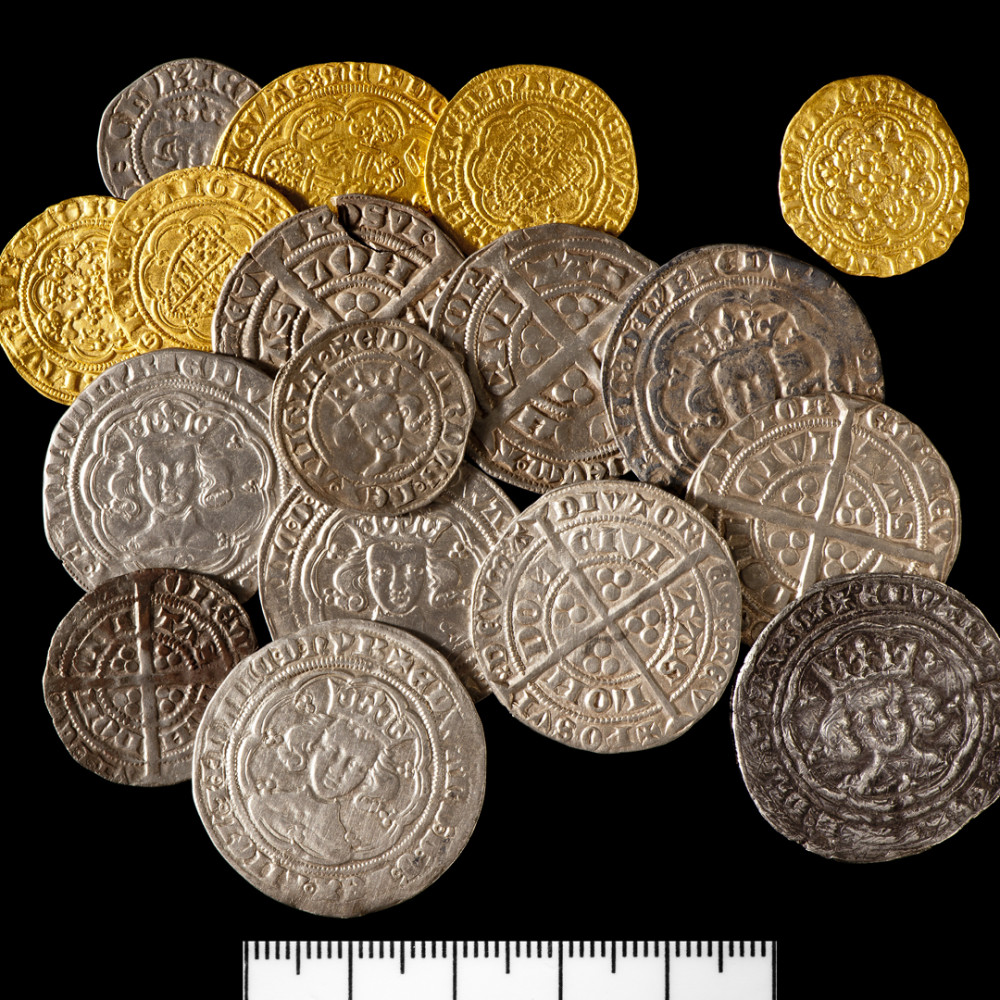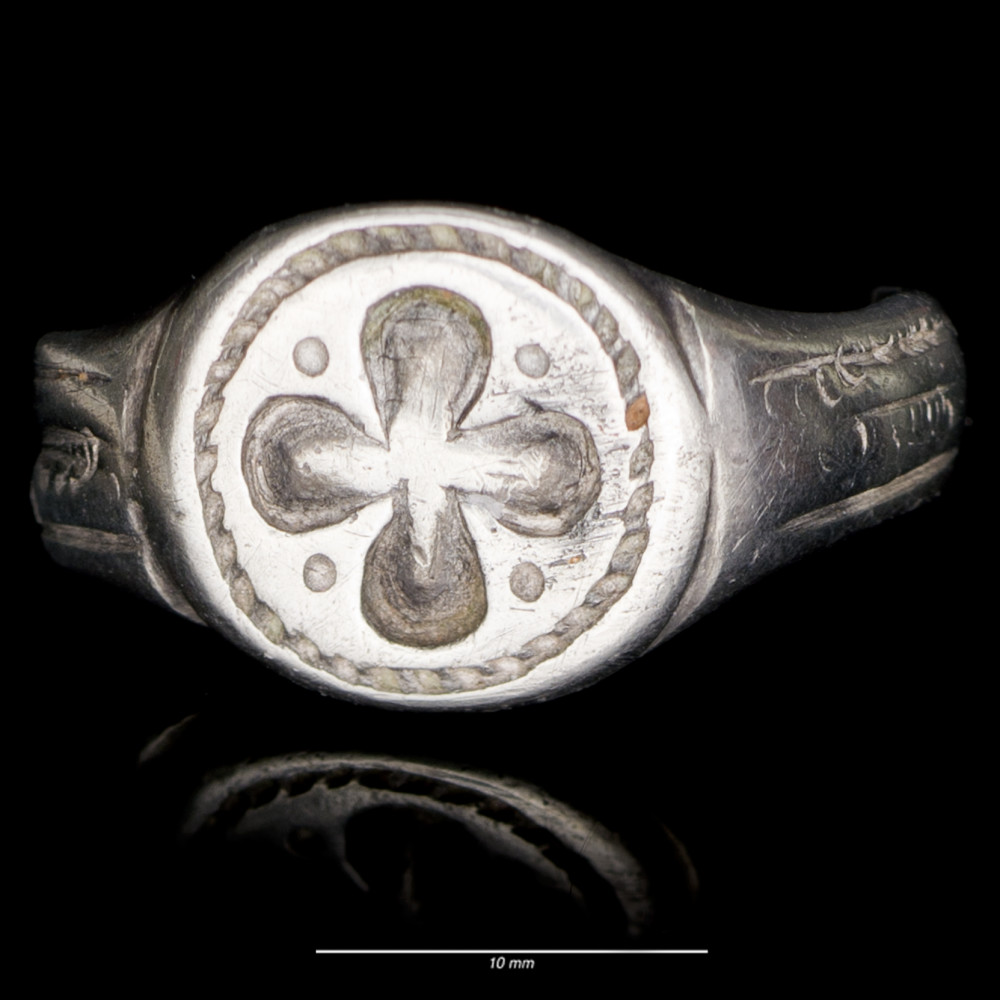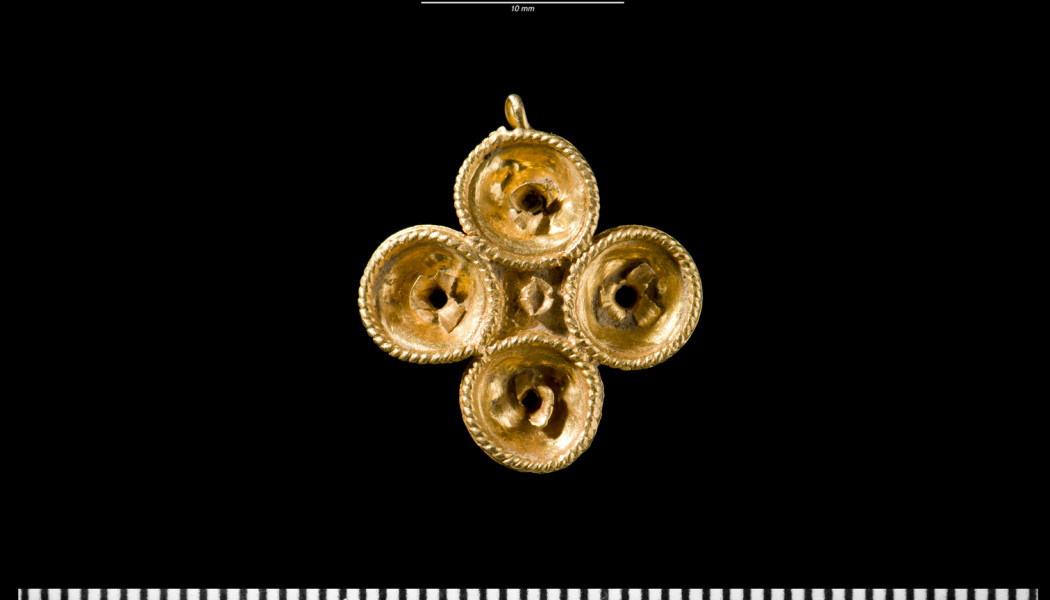Eight discoveries dated to the Late Bronze Age (around 1000-800 BC or 3,000-2,800 years ago), the Middle Ages (from the 5th to the 15th centuries) and the Tudor period (16th century) have today (22 April 2015) been declared treasures by HM Coroner for Cardiff and The Vale of Glamorgan.
A medieval hoard of 17 coins discovered by Roland Mumford in December 2012, while metal detecting on farm land in Wenvoe Community, was among them. The hoard is made of five gold and twelve silver coins and includes a half-noble, four quarter-nobles of Edward III (1327-77) and principally groats (4d pieces) of Edward III. The hoard is thought to be dated to around 1365 – 1370. The oldest coin discovered by Mumford on that occasion is a penny of Edward I from the 1290s and the most recent, both gold and silver, date from the 1360s.
An archaeological investigation of the find-spot was undertaken by National Museum and PAS Cymru archaeologists, with the support of the landowner and the assistance of the finder. As no obvious signs of settlement were found, this deposition or loss of a significant sum of money remains a mystery. The total contemporary value of the group is 13s 4d which is exactly one mark, the unit of accounting most commonly used at the time. With daily pay rates of a few pence per day, this represented a considerable sum of money – around two months’ wages, not the sort of sum that many could lay their hands on.

Another hoard including two bronze artefacts, thought to be dated to the Late Bronze Age (around 1000-800 BC or 3,000-2,800 years ago), was also declared treasure. The hoard of two bronze artefacts identified as a complete socketed axe of ribbed Croxton Type and a fragment of a socketed axe of ribbed South Wales Type were discovered in Llancarfan Community, in the Vale of Glamorgan, by David Harrison. The artefacts were discovered together in October 2013, while Mr Harrison was metal detecting on farm land. The fragmentary axe had been wedged into the socket of the complete axe immediately before burial and were found near to each other in the corner of a field. Hoards, involving the burial of both complete and fragmentary axes, tools and weapons, were probably buried during social and ritual ceremonies, expressing the beliefs of the times. Towards the end of the Late Bronze Age there was a significant increase in the frequency of axe hoards buried across south east Wales. The forcible ramming of artefact fragments into the sockets of other axes is a widespread phenomenon in Britain at this time. This may have represented the deliberate destruction or symbolic killing of objects, immediately before they were placed in the ground.
Another find of a small gold pendant which is thought to be dated to the first half of the 16th century was also declared treasure today. The pendant was discovered in the Community of St Donats by David Hughes on the 4 November 2011. Four circular sockets that would once have held beads, pearls or semi-precious stones, are fastened to a small circular back-plate in a cross shape. The sockets of the pendant are decorated with a gold twisted wire that can be matched to Tudor dress hooks and pins. Cross-shaped pendants were particularly popular during the late Middle Ages/early Tudor period. More luxurious examples of such pendants can be seen on Tudor royal portraits.

The artefact was found by Michael Gerry on 31 August 2013 whilst metal detecting in Sully. “These significant finds are allowing us to slowly build up a detailed and previously poorly documented picture of personal adornment in late medieval, Tudor and early modern Wales,” said Dr Mark Redknap, Head of Collections and Research at Amgueddfa Cymru – National Museum Wales. “Data on these objects and their find-spots are now enabling us to compare fashion and taste here with trends further afield”.
The finds will be acquired by Amgueddfa Cymru – National Museum Wales following their independent valuation, using funding secured via the Collecting Cultures stream of the Heritage Lottery Fund.






